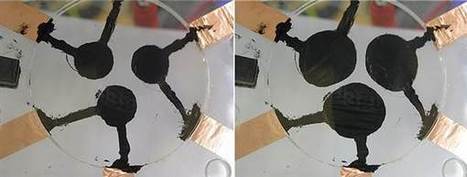Both electronic paper (e-paper) and certain biological organisms share the need for adaptive, reflective surfaces to communicate information. The goal of each is to use numerous colors, textures, polarization, and contrast variations without optical losses in order to maximize and control (in an energy-efficient way) the desired physical appearance. Recognizing these display commonalities, researchers at the University of Cincinnati (Cincinnati, OH), the USA Marine Biological Laboratory (Woods Hole, MA), the Air Force Research Laboratory at Wright Patterson Air Force Base (Dayton, OH), and the Army Research Laboratory (Adelphi, MD) are attempting to merge the knowledge base of biomimetics used for biological adaptive coloration and appearance (with a focus on cephalopods such as squid, cuttlefish, and octopus) and synthetic reflective e-paper displays (such as Amazon’s Kindle and the Sony Reader) using a series of scientific metrics
 Your new post is loading...
Your new post is loading...
 Your new post is loading...
Your new post is loading...












